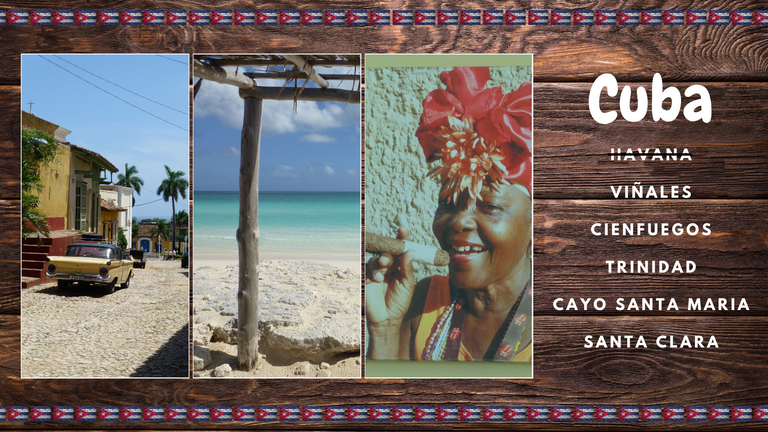
English Version
Welcome to the land of revolution, communism, rum, and cigars - Cuba
In part 2 of our series about our experiences in Cuba, we take you on a journey to the birthplace of the Cuban cigar and explore the surroundings and the secrets of this world-renowned product.
Have fun reading!


To escape the hustle and bustle of the big city and to explore the secret of tobacco, we traveled to the Valle de Viñales, almost 200km away, for two days. The area is particularly known for the cultivation of tobacco and coffee.
From Havana, we took the Viazul (quasi a Cuban Greyhound bus, which is mainly used by tourists) for about 4 hours on Cuba's lonely roads with very few people and cars. There was also a short break at a rest area typical for Cuba before we arrived at our destination.

In the city of Viñales, which bears the exact name of the region, we arrived right at the main square of the city. Here you find the church Iglesia del Sagrado Corazon de Jesus.
Since the town is very small, walking to our Casa Particular was not a problem. We were glad we already had accommodation because at the bus station we were besieged by a horde of Cubans who all wanted to offer their accommodation to us. You can imagine this place in the picture above with ~50 Cubans all shouting wildly in English and Spanish that they have the cheapest accommodation available.
It was off-season for tourists and everyone was desperately looking for their source of income. At some point we luckily let the last of these smugglers understand that we were not interested and that we were already taken care of. This experience was to be repeated again and again during our travels in Cuba. 😅
It should be noted by way of explanation that these licenses for renting rooms to tourists are extremely expensive by Cuban standards and have to be renewed regularly. Therefore, everyone has a problem if no tourists come to them for too long.
The way to our accommodation led us across the deserted little town. If you look at the few people in the pictures, you can understand why the pack was looking for guests so intensively. There are not many in the off-season who drive 200km through Cuba just to look at the origins of the habaneros.

After a 15-minute walk with our backpacks through the sultry midday sun, we finally arrived at our accommodation. It shouldn't have lasted any longer, otherwise, we would have melted.
From our accommodation, we had a great view of nature. And there were a lot of mango trees in the garden so we were lucky and received a mango smoothie as a welcome gift.
Delicious! And very welcome given the heat and the walking distance to the accommodation. 😂
Don't expect too much from the typical Casa Particulares in Cuba. As already written in the post about Havana, these are "only" rooms that a family has cleared up and been approved for renting out to tourists.
Here are a few impressions:
We were asked to help with the carrying of the bedframes because apart from the master of the house, no one else from the family was there at the time. But that wasn't a problem.

We then spent the rest of the day walking through the streets of the city and experiencing a typical Cuban village.
Dinner (chicken and rice, of course; there does not seem to exist much else in Cuba) including our typical holiday drink was also served. Funnily enough, we only drink Coca-Cola on vacation. After that, we went back to our accommodation to enjoy the sunset from the terrace.

The entire region is a national park with great limestone rocks and the infrastructure is hardly developed. The next day we wanted to explore the Valle de Viñales. And quite typically on horseback, to emulate the locals. Of course, our landlord from the Casa Particular was able to recommend someone directly with whom we could do the tour. Which Cuban doesn't have one or more amigos who offer just what we are looking for?
For me, it was the first ride on a horse in my whole life. According to my wife, I did pretty well for that. After the day in the saddle, my butt still hurt for days afterward, though. 😉
We rode through the Viñales valley for several hours, always along the red slopes, through small streams and huge holes filled with rainwater, some of which were so deep that we had to put up our legs to avoid getting our feet and legs wet.
The view of nature there is a dream. It was really beautiful to ride through the green valley.
Every now and then we stopped to see a cave or to take a break at a lake.

We watched one of our guide's buddies grind coffee and of course, drank a mojito (like every day). This time, however, with honey instead of sugar. In the heat and without drinking much else, we definitely felt the alcohol in it. 😉
Of course, there had to be time for a short couple photo in front of a nice background, before we continued on the horse. Hurting buttocks aside.

Slightly tipsy, we finally rode to a farmer who runs a tobacco plantation. He explained to us exactly how tobacco is grown and dried and how cigars are rolled.
For this, we went to a Casa de Tabaco, a windowless shed with a palm thatch roof. Here the tobacco leaves dry in complete darkness for several weeks.
Once they have lost all moisture, they are transported to factories for further processing. Of course, the farmers also know all the tricks of how to roll a real habanero themselves.
In the meantime, it was already late afternoon and we went back to Viñales riding along the fields and dirt roads.

On our way, we also met a lot of Cubans on horses and with ox carts. The animals here are still real farm animals used for labor.

At the end of the day, we enjoyed a typical Cuban meal, the so-called Moros y Christianos, cocked up by our landlord. We had white rice with black beans and chicken thighs. In addition fried bananas and of course a fruit plate.
There is hardly anything else to experience in the area. That's why we left again the next day and made our way to the Viazul in the city center.
In the next post of the series we will take you to the "Pearl of the South" and show you the beautiful city of Cienfuegos.


Deutsche Version
Willkomen im Land der Revolution, des Kommunismus, des Rums und der Zigarren - Kuba
In Teil 2 unserer Serie über unsere Erfahrungen in Kuba nehmen wir euch mit auf eine Reise an den Herkunftsort der kubanischen Zigarren und erkunden die Umgebung und die Geheimnisse dieses weltweit bekannten Produkts.
Viel Spaß beim Lesen!


Um dem Trubel der Großstadt zu entkommen und das Geheimnis des Tabaks zu erkunden, sind wir für zwei Tage in das knapp 200km entfernte Valle de Viñales gereist. Die Gegend ist insbesondere bekannt für den Anbau von Tabak und Kaffee.
Von Havanna aus ging es mit dem Viazul (quasi ein kubanischer Greyhound Bus, den v.a. Touristen nutzen) für circa 4 Stunden über die menschen-/ und autoarmen Fernstraßen Kubas. Eine kurze Pause an einem für Kuba typischen Rastplatz war auch dabei, bevor wir an unserem Ziel ankamen.

In der Stadt Viñales, die genau den Namen der Region trägt, kamen wir direkt am wichtigsten Platz der Stadt an. Hier befindet sich die Kirche Iglesia del Sagrado Corazon de Jesus.
Da die Stadt sehr klein ist war es kein Problem, zu unserem Casa Particular zu laufen. Wir waren froh schon eine Unterkunft zu haben, denn an der Busstation wurden wir von einer Horde Kubaner überrumpelt, die uns alle eine Unterkunft vermitteln wollten. Ihr könnt euch diesen Platz auf dem Bild oben mit ~50 Kubanern vorstellen, die alle wild in Englisch und Spanisch durcheinader rufen, dass es bei ihnen die günstigste Unterkunft gibt.
Es war wohl gerade Off-Season für Touristen und alle suchten händeringend nach ihrer Einkommensquelle. Irgendwann hatten wir zum Glück auch dem letzten dieser Schlepper zu verstehen gegeben, dass wir kein Interesse haben und bereits versorgt sind. Diese Erfahrung sollte sich noch des Öfteren wiederholen. 😅
Erklärend sollte man wohl dazu sagen, dass diese Lizenzen zur Vermietung von Räumen an Touristen für kubanische Verhältnisse extrem teuer sind und regelmäßig erneuert werden müssen. Daher hat jeder ein Problem, wenn zu lange keine Touristen zu ihm kommen.
Der Weg zu unserer Unterkunft führte uns dann quer durch das menschenleere kleine Städtchen. Wenn man sich die Menge an Leuten auf den Bildern anschaut versteht man schon, warum die Meute so intensiv nach Gästen gesucht hat. Es gibt offensichtlich in der Off-Season nicht viele, die 200km durch Kuba fahren, nur um sich die Herkunft der Habaneros anzuschauen.

Nach 15 Minuten Fußweg mit unseren Rücksäcken durch die schwüle Mittagssonne waren wir dann auch endlich an unserer Unterkunft angekommen. Länger hätte es auch nicht dauern dürfen, sonst wären wir geschmolzen.
Von unserer Unterkunft hatten wir einen tollen Blick auf die Natur. Und im Garten standen ganz viele Mangobäume, sodass wir zur Begrüßung direkt einen Mango-Smoothie erhalten haben.
Super lecker! Und bei der Hitze und dem Laufweg zur Unterkunft sehr willkommen. 😂
Von den typischen Casa Particulares in Kuba solltet ihr nicht zu viel erwarten. Das sind, wie im Post zu Havanna schon geschrieben, "nur" Räume, die eine Familie extra freigeräumt und sich zur Vermietung an Touristen hat genehmigen lassen.
Hier ein paar Eindrücke:
Die Betten werden gerade erst noch aufgebaut (hinten im Bild). 😅
Wir durften beim Tragen mithelfen, da abgesehen vom Hausherrn sonst gerade keiner aus der Familie da war. Aber das war kein Problem. Dafür standen unsere Betten dann auch schnell.

Den Rest des Tages sind wir dann in Ruhe durch die Straßen der Stadt gelaufen und haben ein typisches kubanisches Dorf erlebt.
Abendessen (natürlich Hähnchen mit Reis) inklusive unseres typischen Urlaubsgetränks, gab es dann auch noch. Wir trinken lustigerweise immer nur im Urlaub Cola. Danach sind wir zurück in unsere Unterkunft, um den Sonnenuntergang von der Terrasse aus zu genießen.

Die gesamte Region ist ein Nationalpark mit tollen Felsen aus Kalkstein und von der Infrastruktur her kaum erschlossen. Am nächsten Tag wollten wir das Valle de Viñales-Tal dementsprechend umgebungsgerecht erkunden. Und zwar ganz typisch auf dem Rücken eines Pferdes, um es den Einheimischen gleichzutun. Unser Vermieter vom Casa Particular konnte uns natürlich direkt jemanden empfehlen, mit dem wir die Tour machen können. Welcher Kubaner hat nicht einen oder auch mehrere Amigos, die zufällig gerade genau das anbieten.
Für mich war es der erste Ausritt auf einem Pferd in meinem ganzen Leben. Laut meiner Frau habe ich mich dafür wohl ganz gut geschlagen. Nach dem Tag im Sattel tat mir aber tagelang danach noch der Hintern weh. 😉
Über mehrere Stunden sind wir durch das Viñales-Tal geritten, immer entlang der roten Pisten, durch kleine Bäche und riesige Löcher gefüllt mit Regenwasser, die teilweise so tief waren, dass wir unsere Beine anziehen mussten, um keine nassen Füße und Beine zu bekommen.
Der Ausblick auf die Natur dort ist ein Traum. Es war wirklich wunderschön, durch das grüne Tal zu reiten.
Immer mal wieder sind wir abgestiegen, um eine Höhle anzusehen oder Pause an einem See zu machen.

Wir haben bei einem der Kumpels unseres Guides zugesehen, wie Kaffee gemahlen wird und haben selbstverständlich einen Mojito getrunken (wie jeden Tag). Dieses Mal allerdings mit Honig anstatt Zucker. Auf die Hitze und ohne viel anderes zu trinken hat man den doch schon gemerkt. 😉
Zeit für ein kurzes Paarfoto vor schönem Hintergrund musste natürlich auch noch sein, bevor es auf dem Pferd mit inzwischem ziemlich schmerzendem Hintern wieder weiter ging.

Leicht angeduselt sind wir schließlich noch zu einem Bauern geritten, der eine Tabak-Plantage betreibt. Der hat uns genau erklärt, wie Tabak angebaut und getrocknet wird und wie man Zigarren dreht.
Hierfür waren wir in einer Casa de Tabaco, einem fensterlosen Schuppen mit einem Dach aus Palmstroh. Hier trocknen die Tabakblätter in vollkommener Dunkelheit mehrere Wochen vor sich hin.
Sobald sie sämtliche Feuchtigkeit verloren haben, werden sie in die Fabriken zur Weiterverarbeitung transportiert. Die Bauern kennen aber natürlich auch alle Tricks wie sich eine richtige Habanero selbst rollen lässt.
Inzwischen war es schon später Nachmittag und es ging entlang der Felder und Felwege wieder zurück nach Viñales.

Auf unserem Weg sind uns auch immer wieder Kubaner auf Pferden und mit Ochsenkarren entgegen gekommen. Die Tiere sind hier noch richtige Nutztiere.

Am Ende des Tages haben wir uns ein typisch kubanisches Essen, das sogenannte Moros y Christianos, von unserem Vermieter zaubern lassen. Es gab weißen Reis mit schwarzen Bohnen und Hähnchenkeule. Dazu frittierte Bananen und natürlich einen Obstteller.
Mehr gibt es in der Gegend dann auch kaum zu erleben. Deswegen sind wir am nächsten Tag auch schon wieder aufgebrochen und haben uns auf den Weg zum Viazul in der Stadtmitte gemacht.
Im nächsten Post der Serie nehmen wir euch mit in die "Perle des Südens" und zeigen euch die schöne Stadt Cienfuegos.

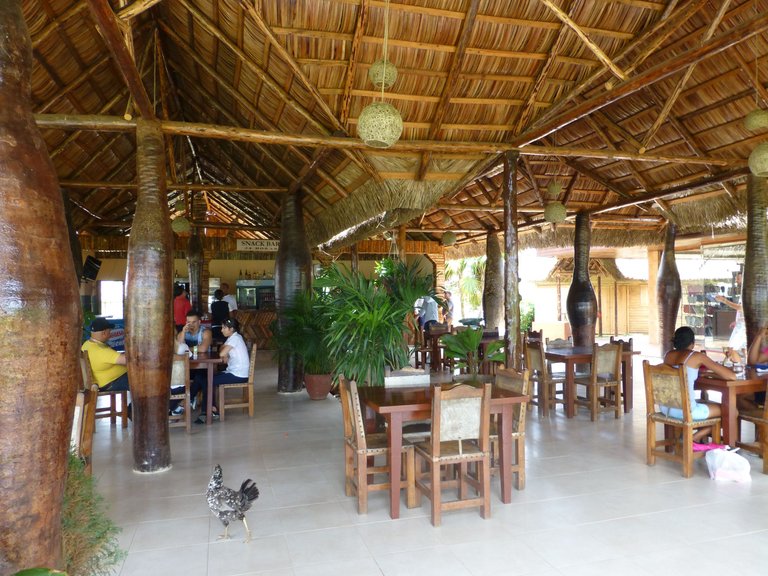
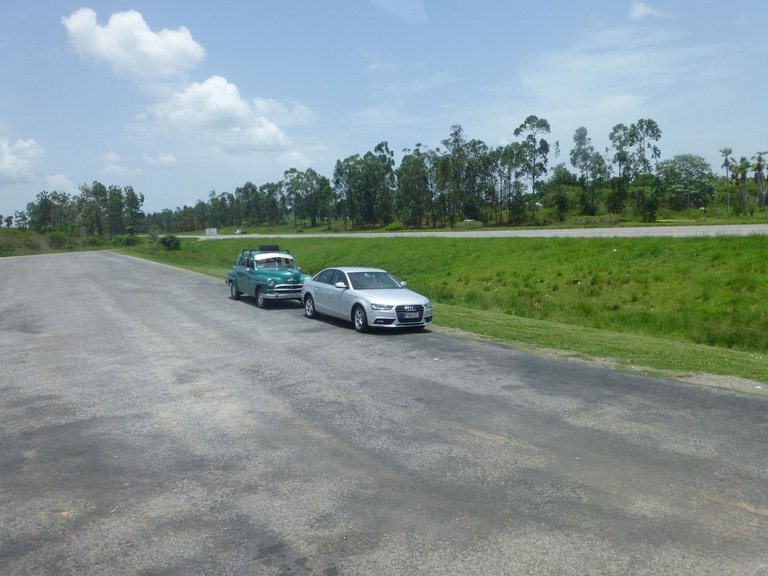
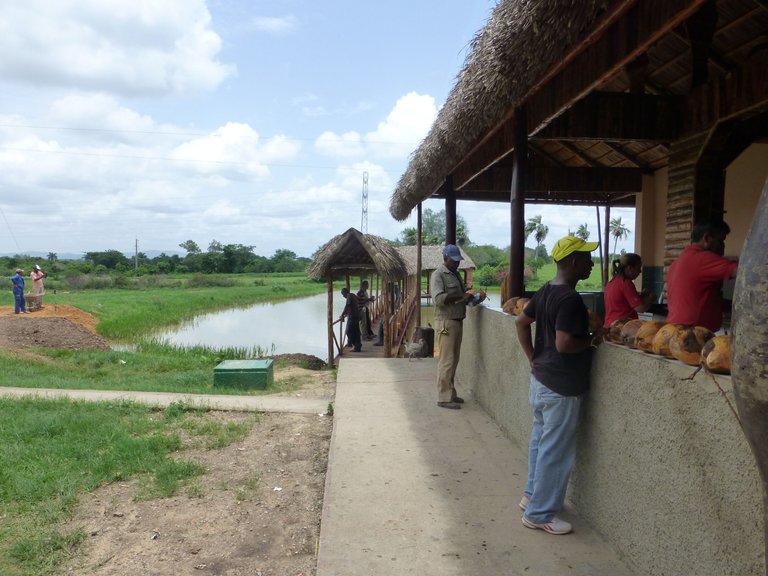
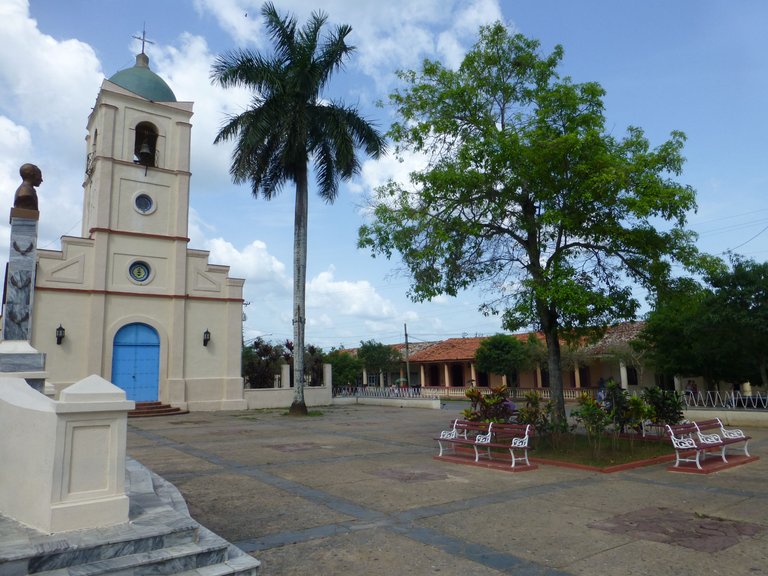
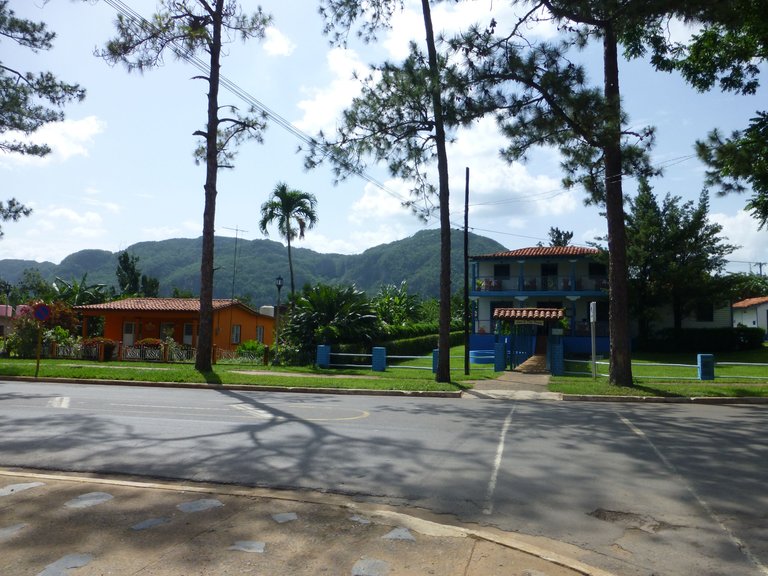
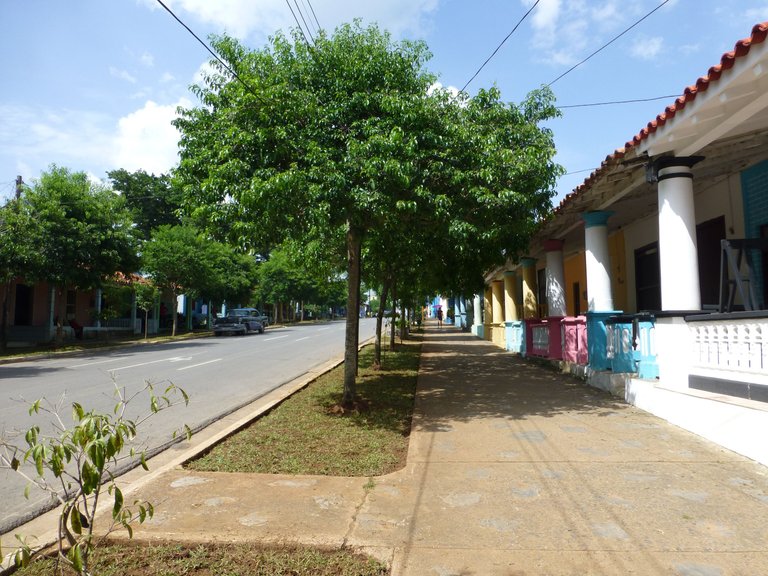
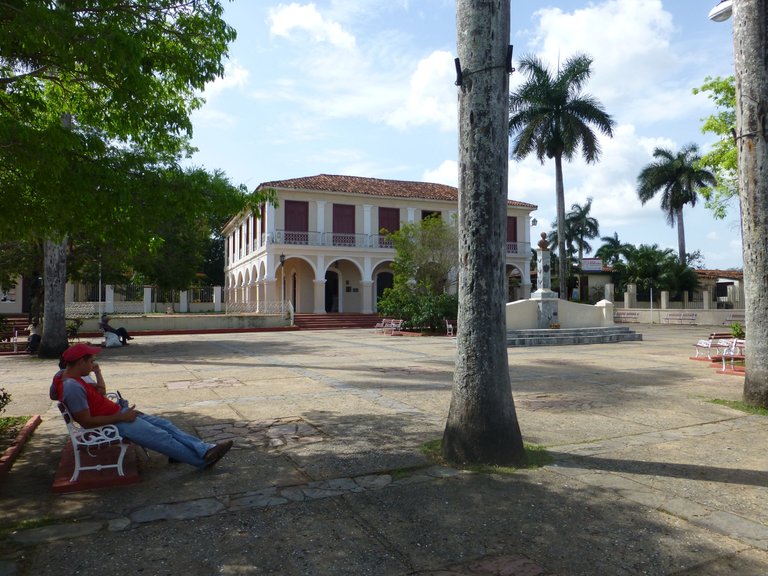
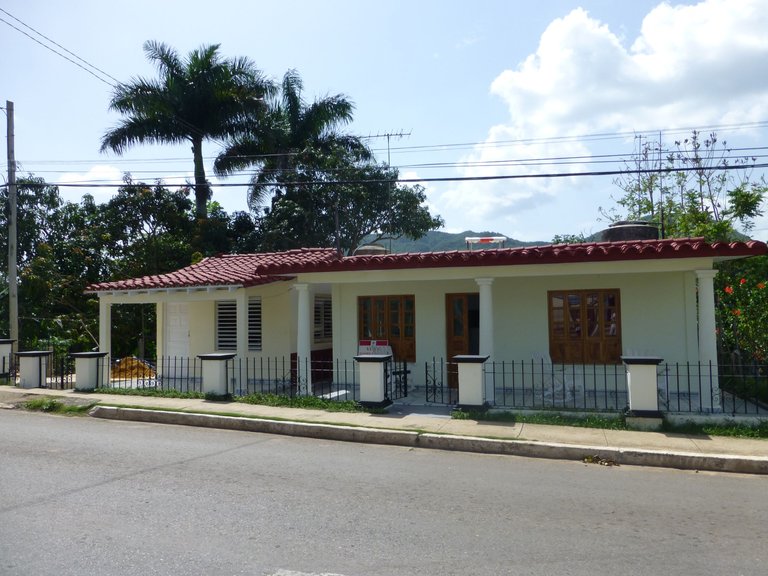

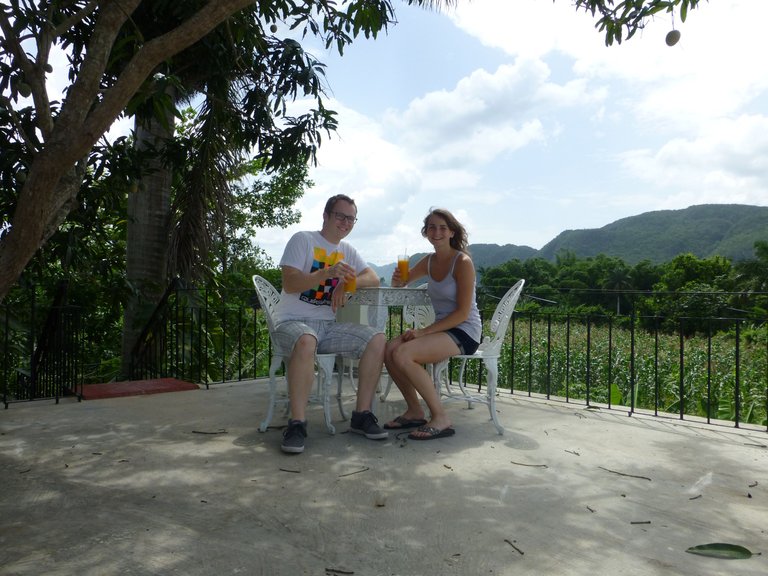
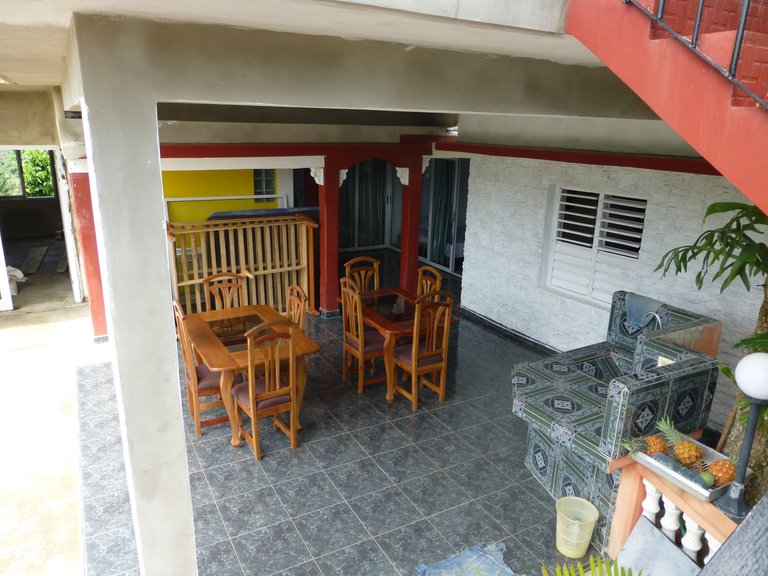
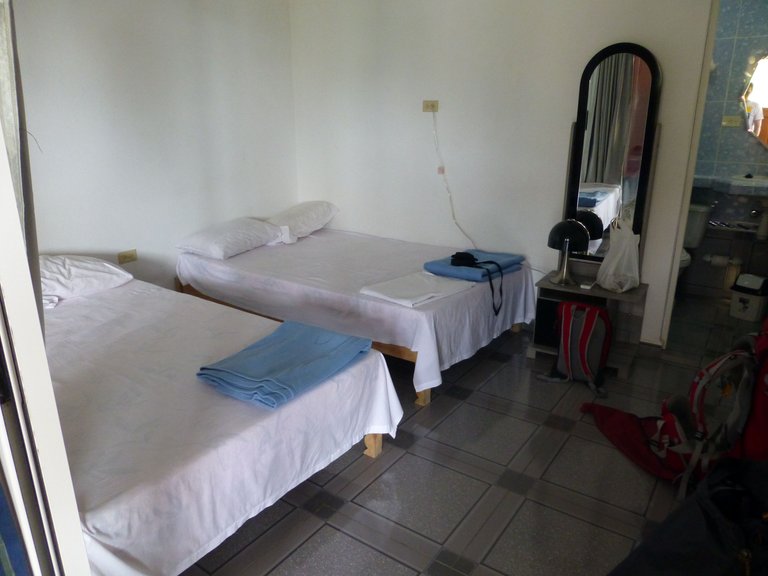
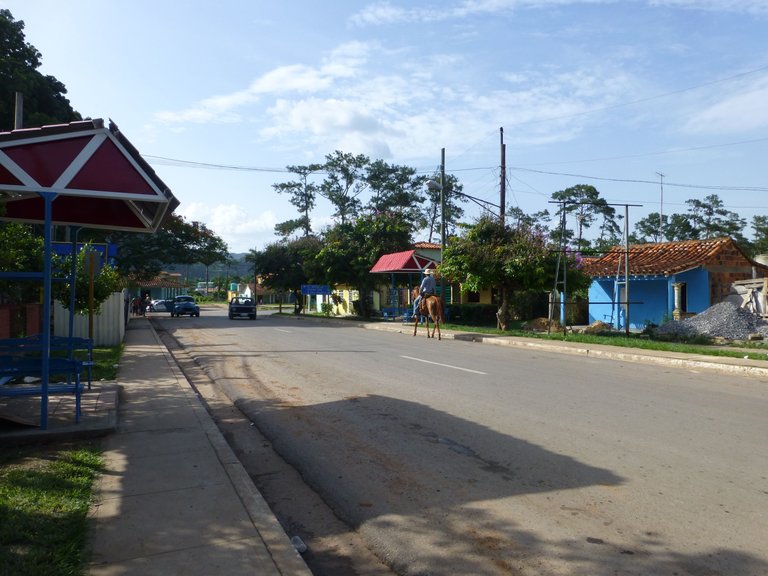
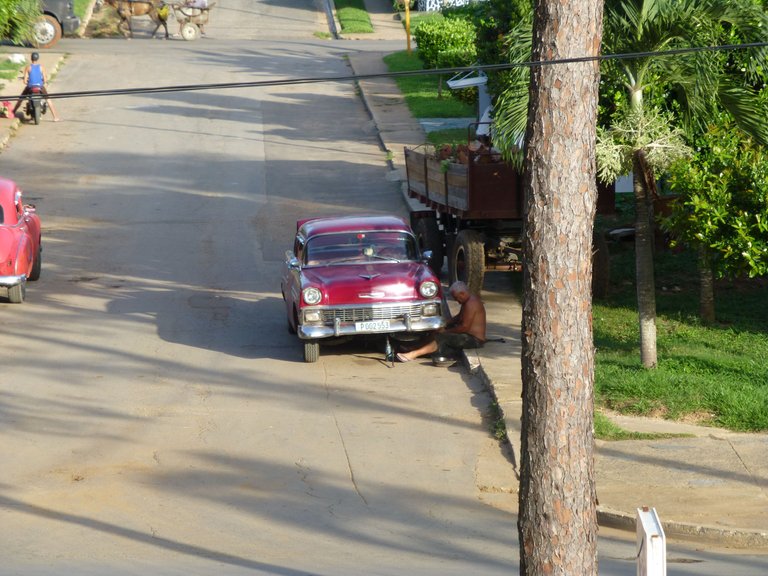
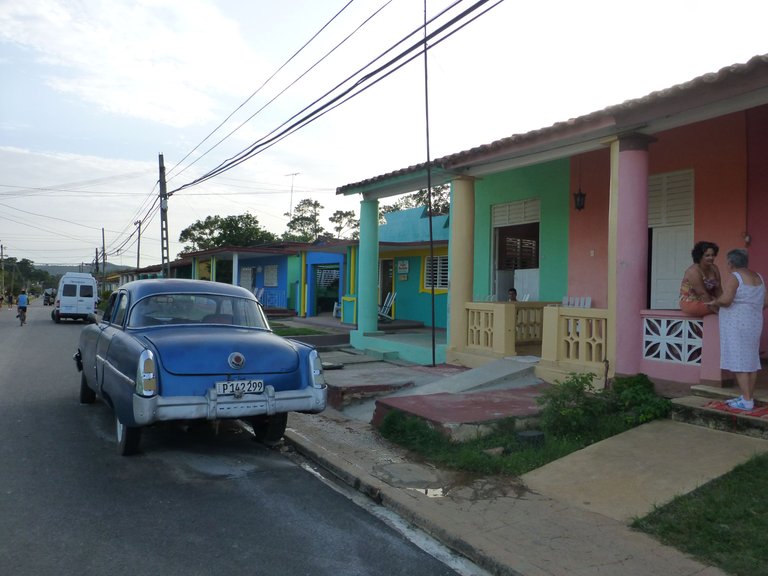
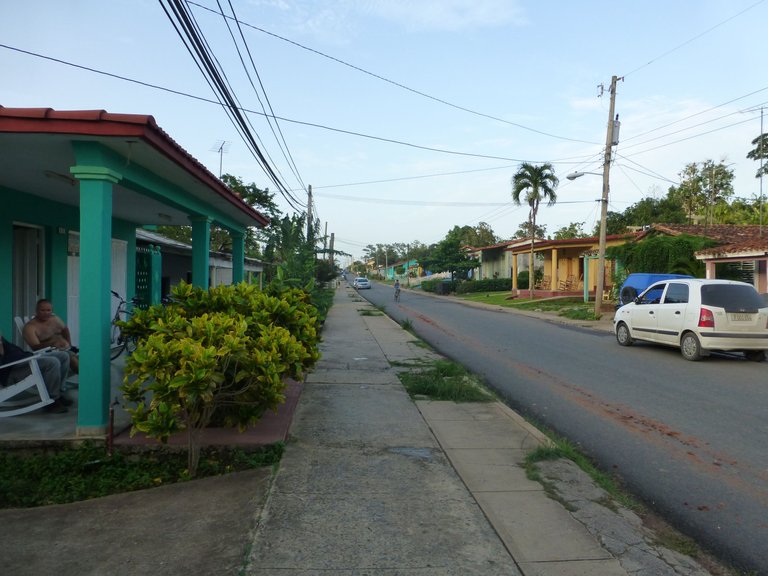
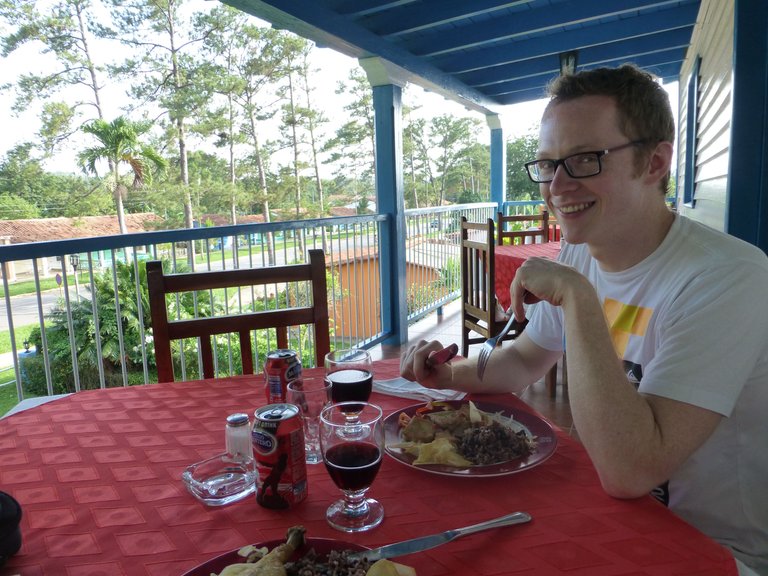
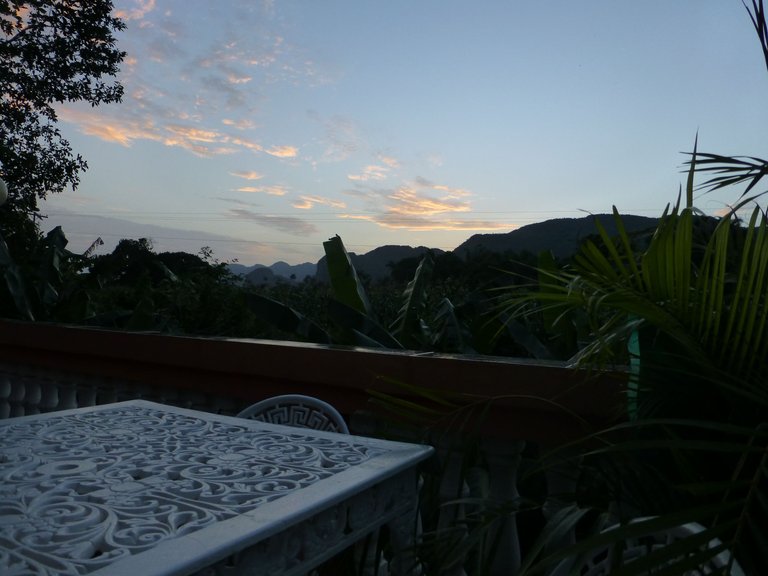
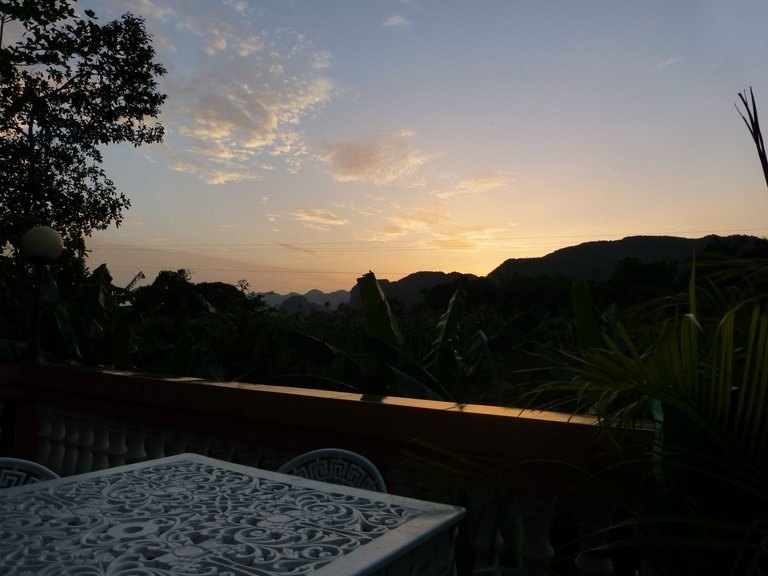
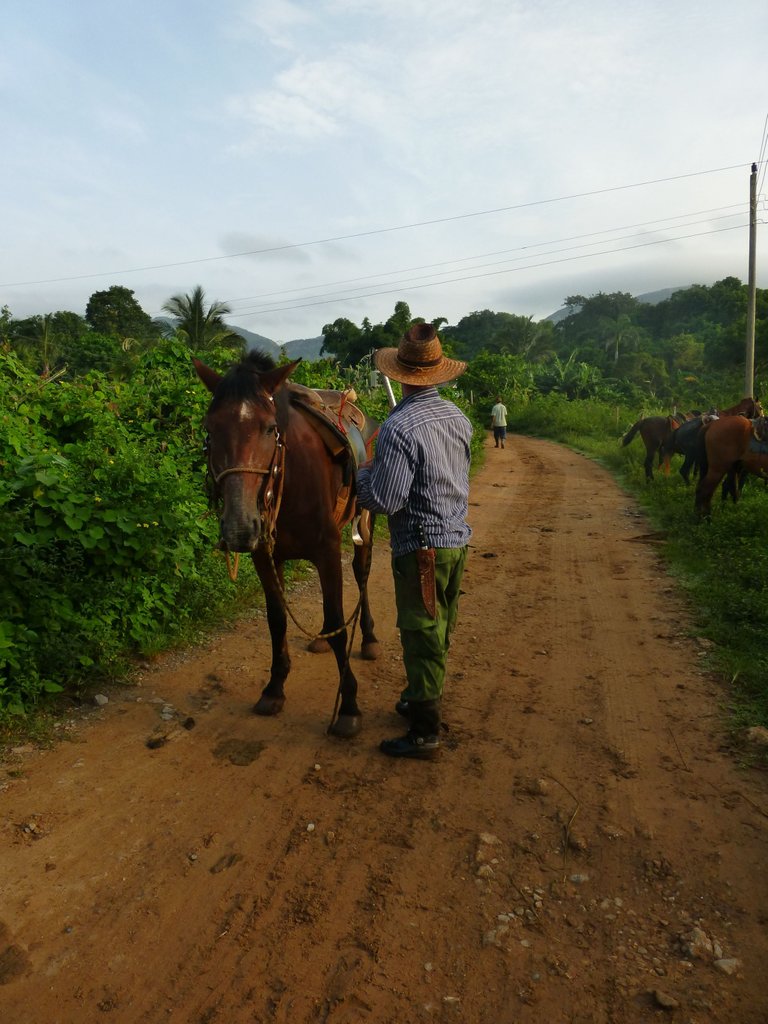
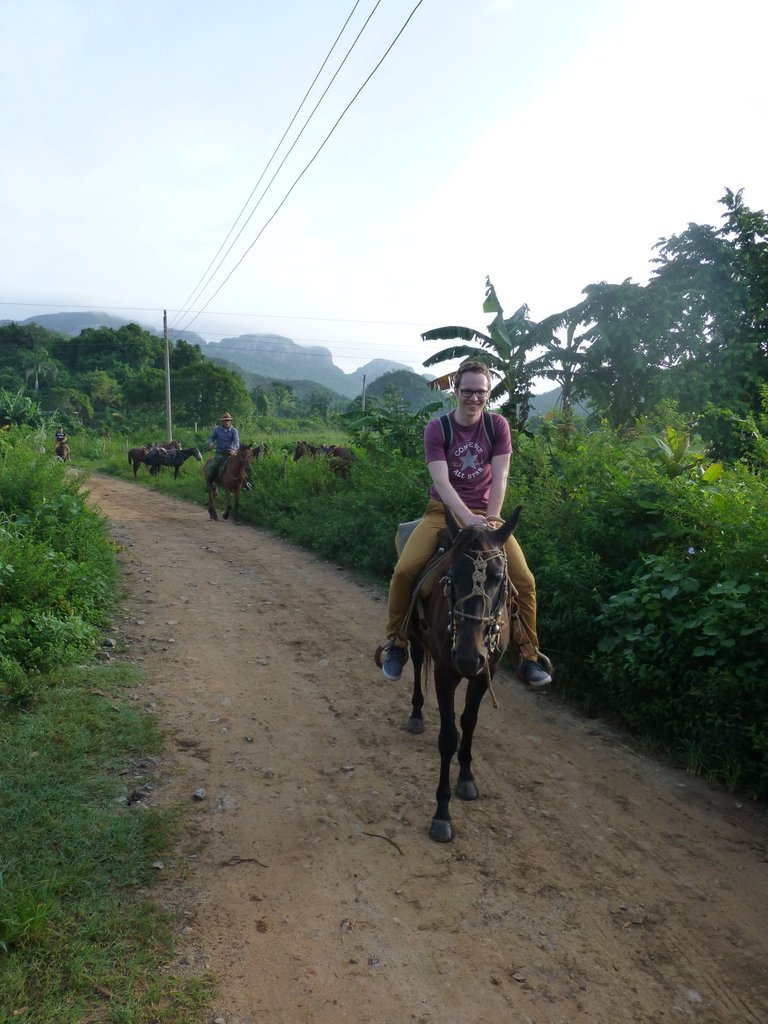
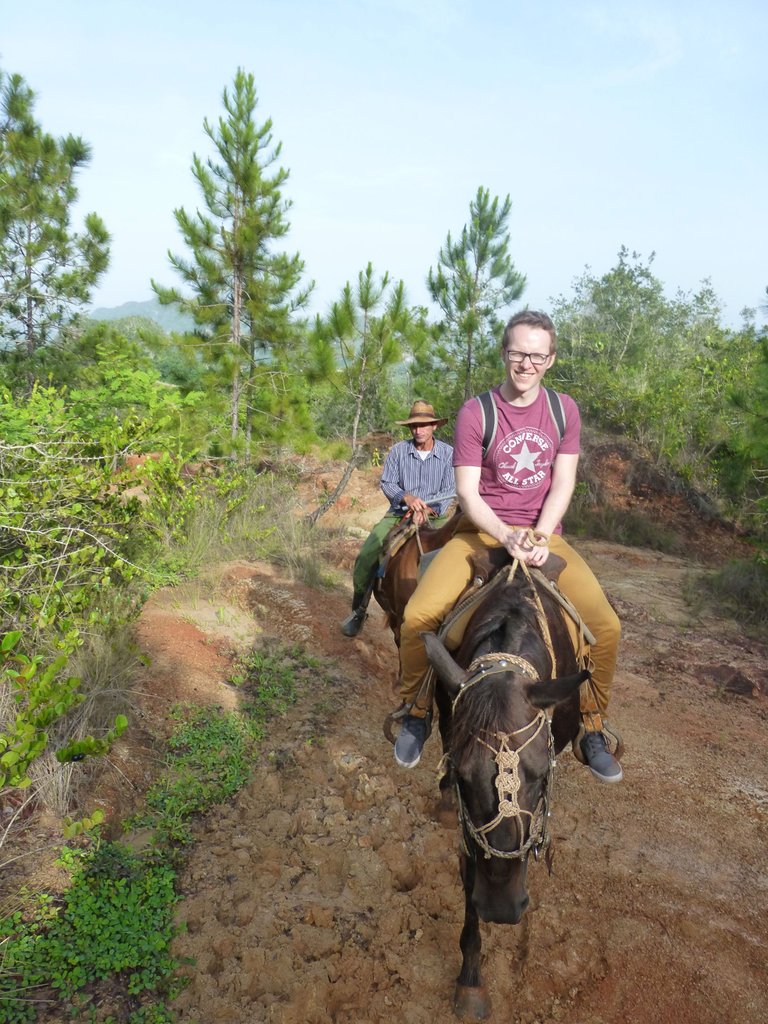
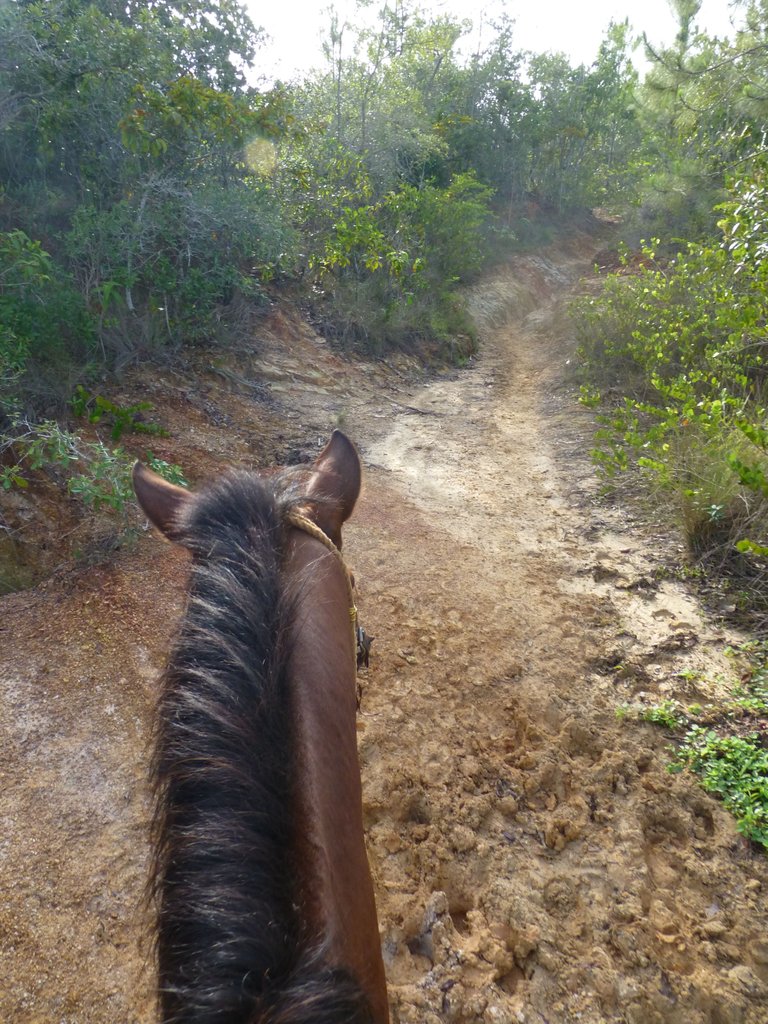
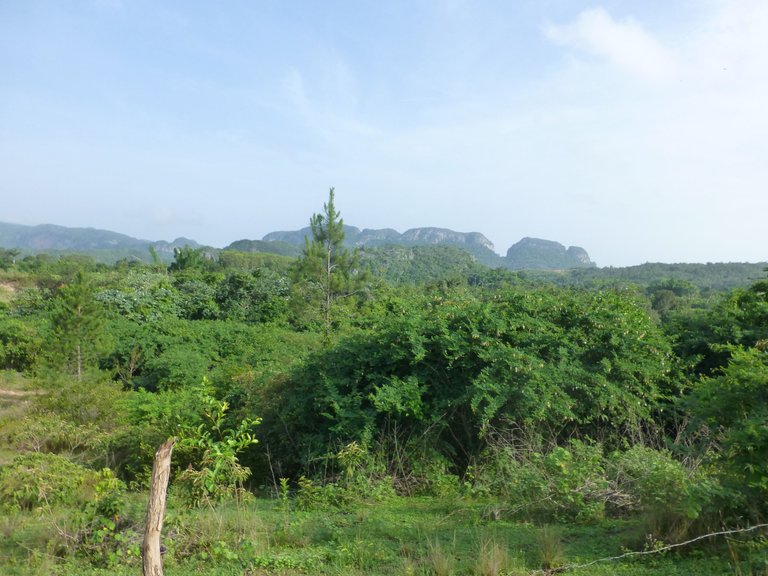
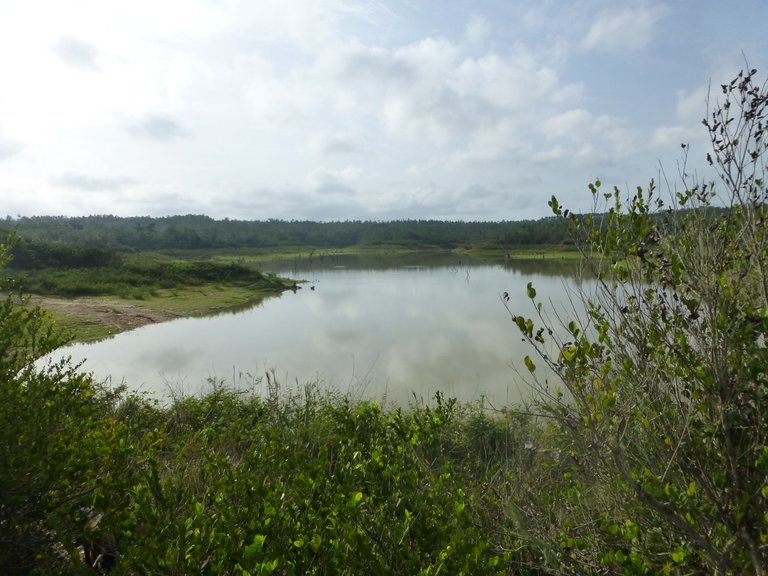
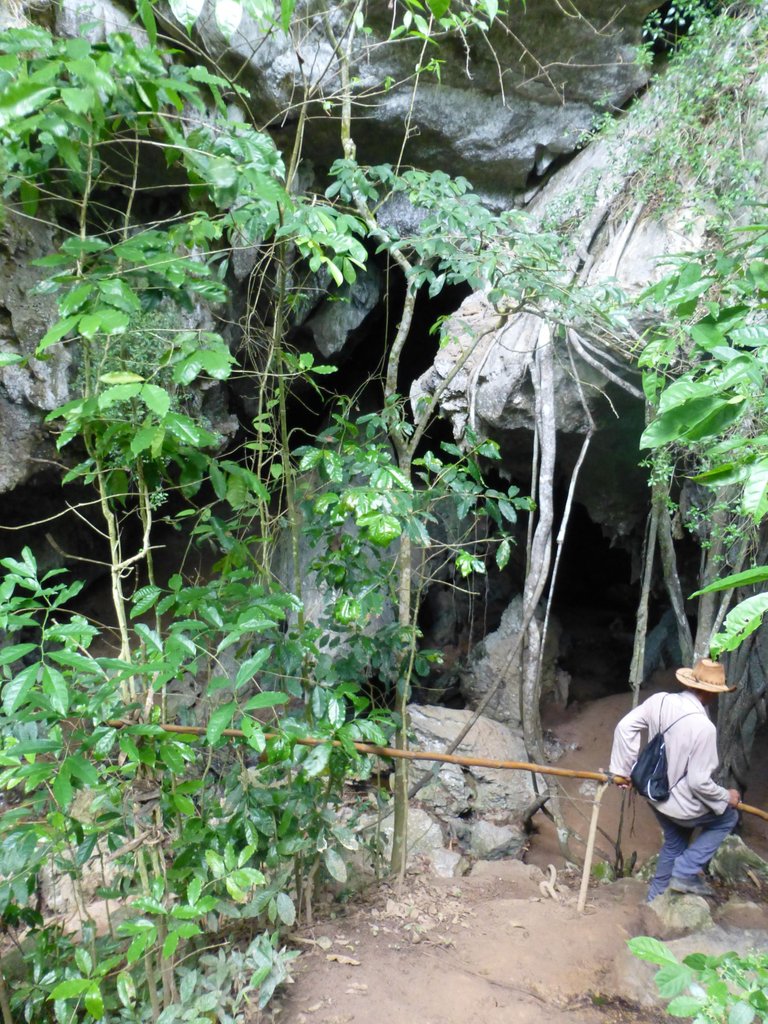
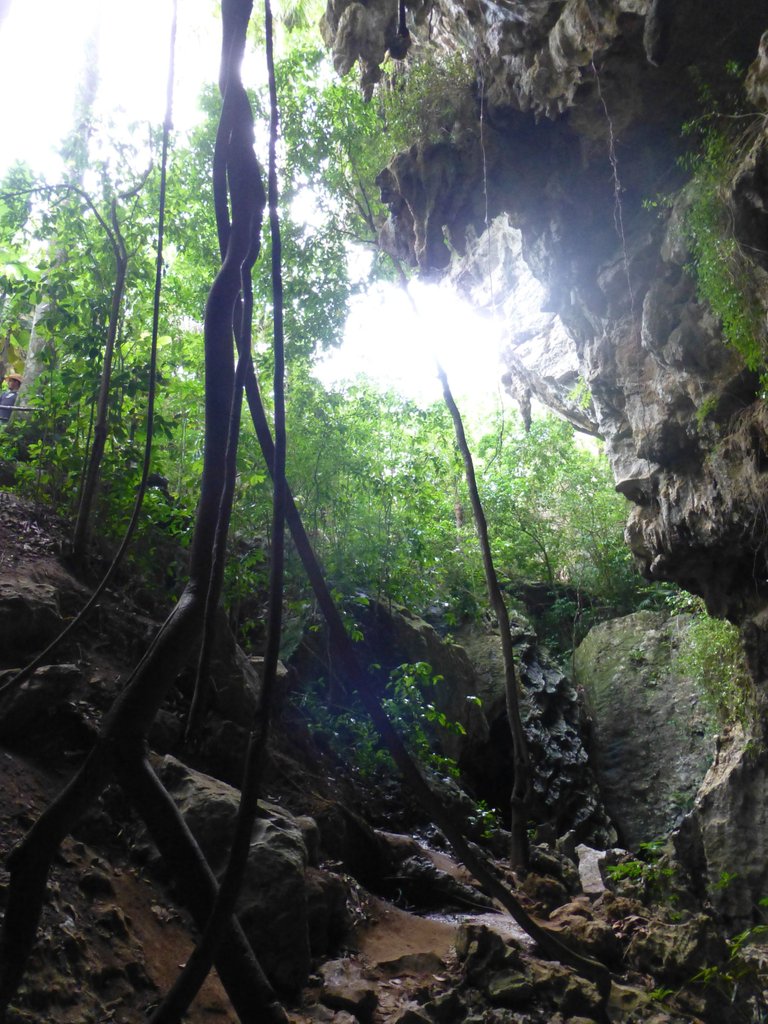

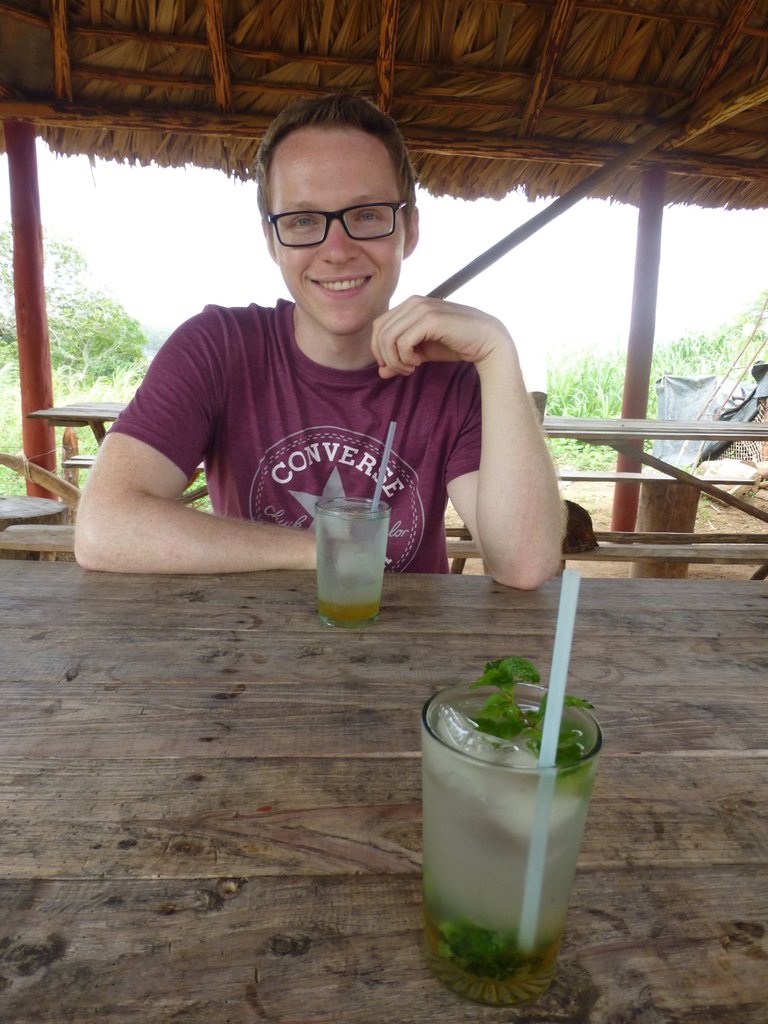
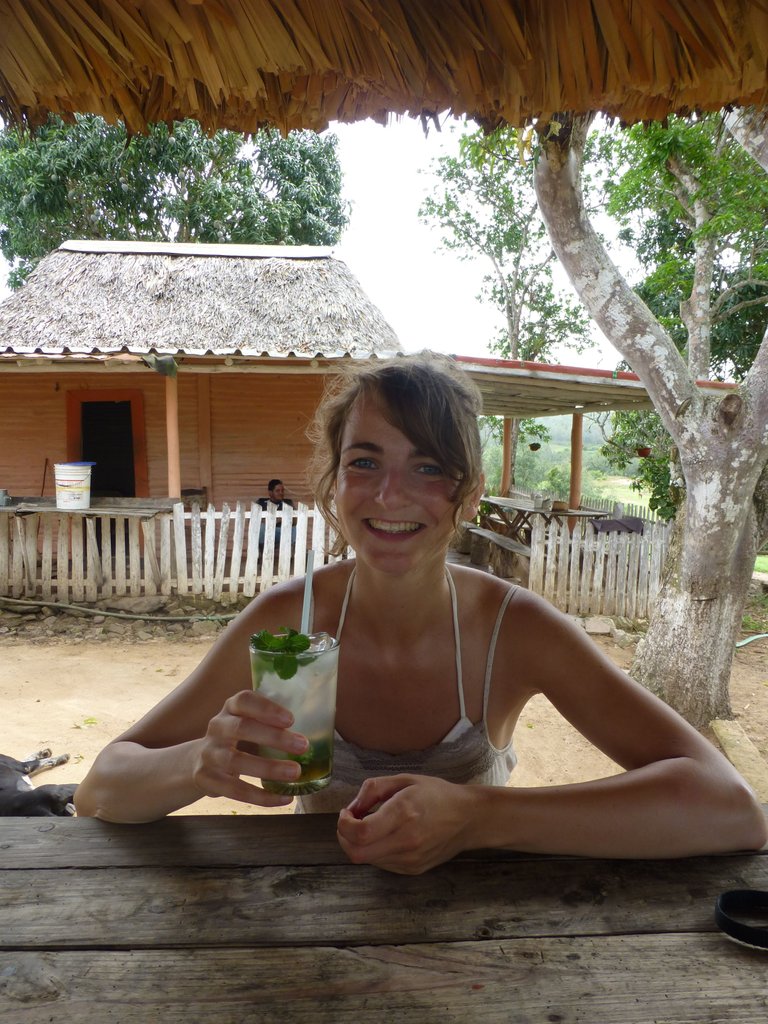
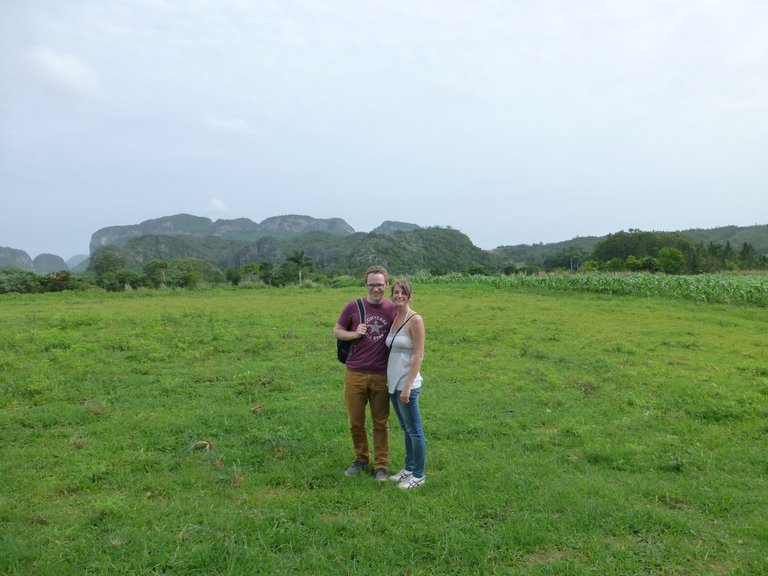
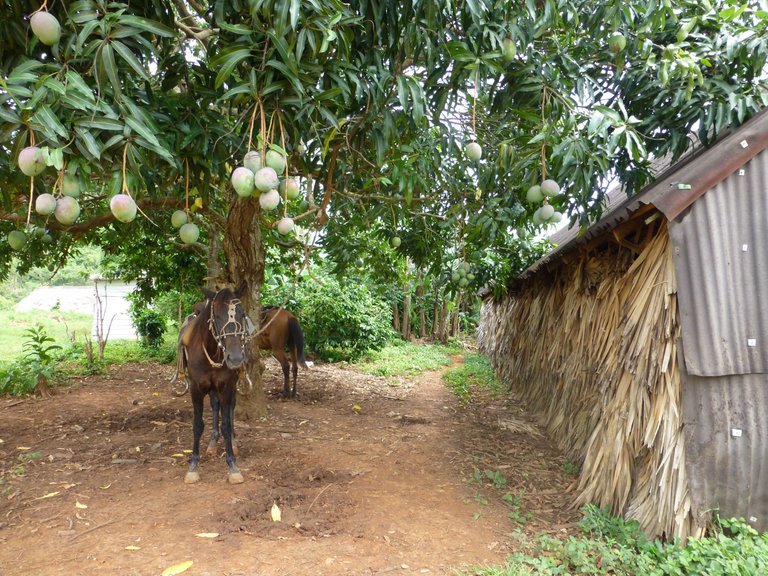
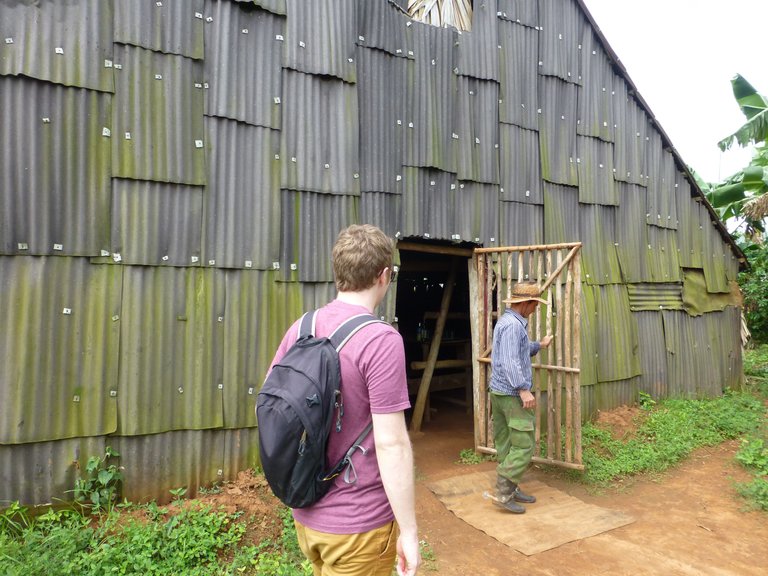
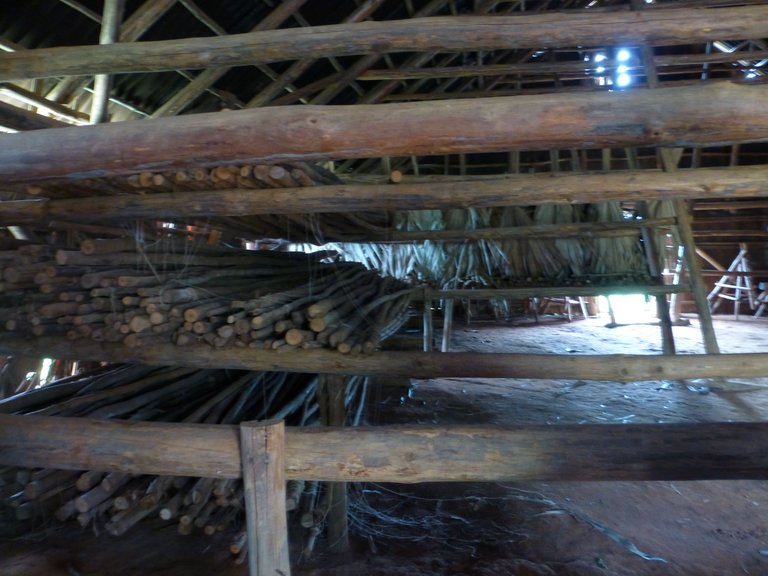
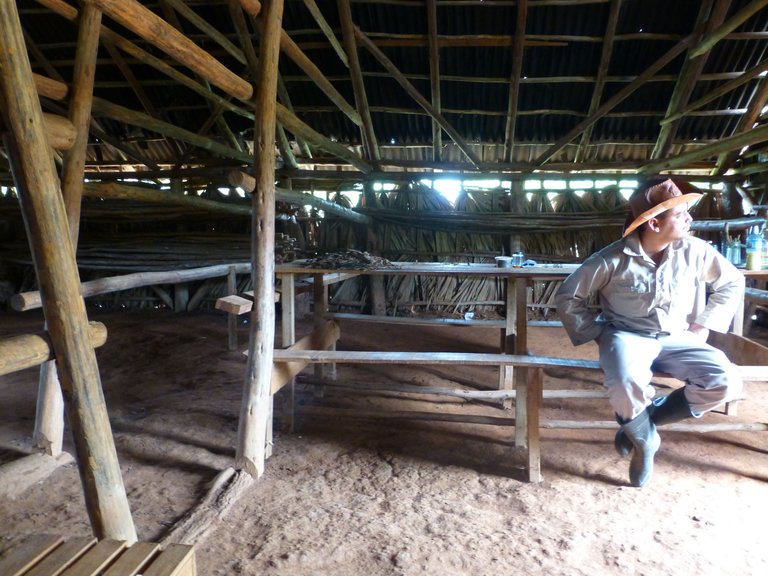
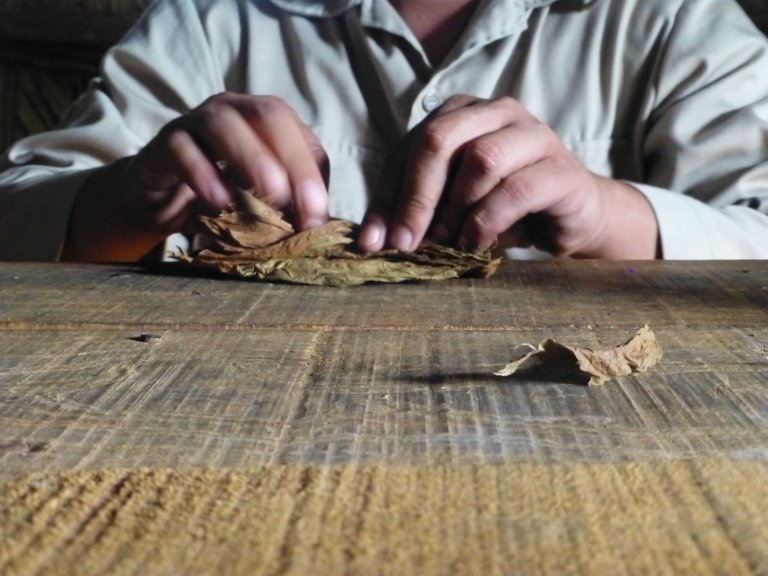
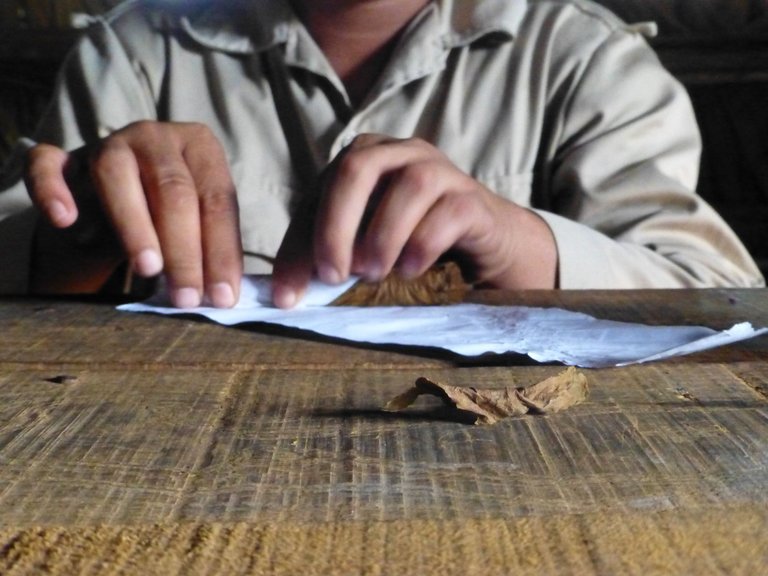
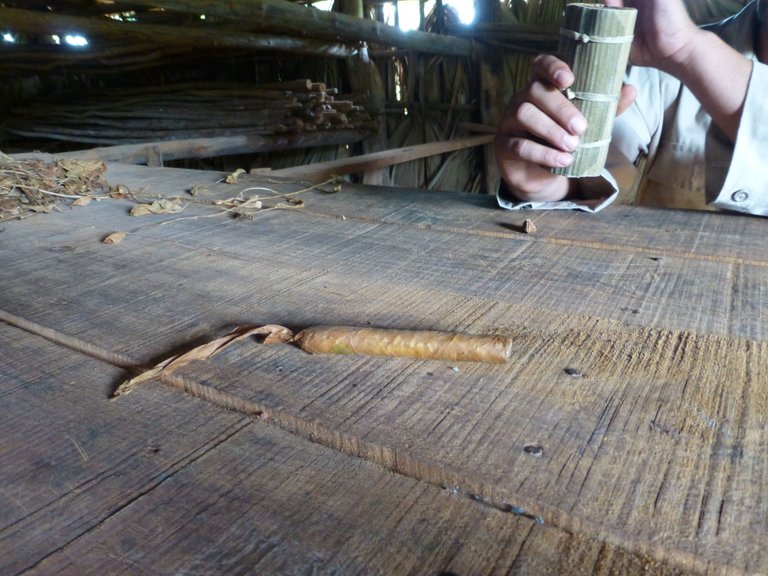
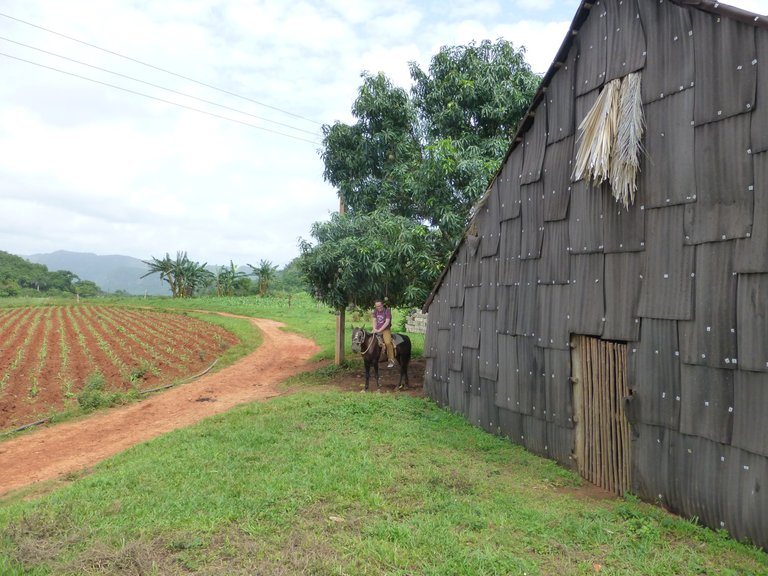
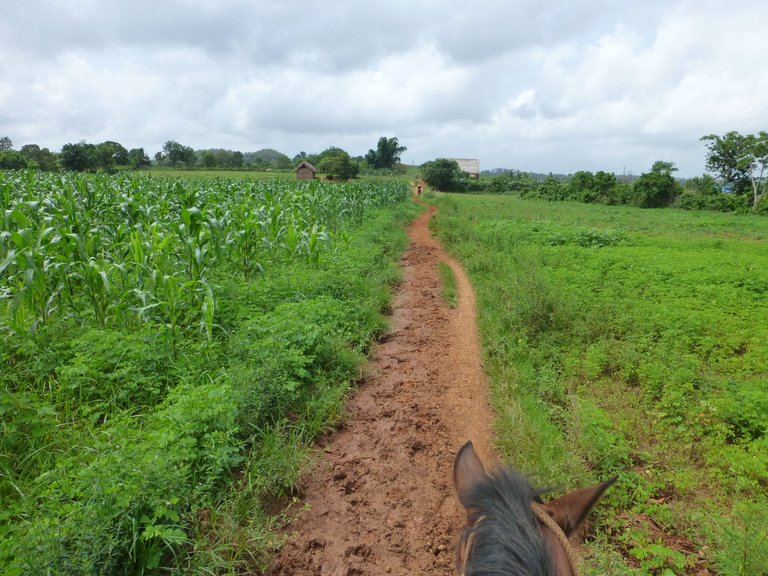
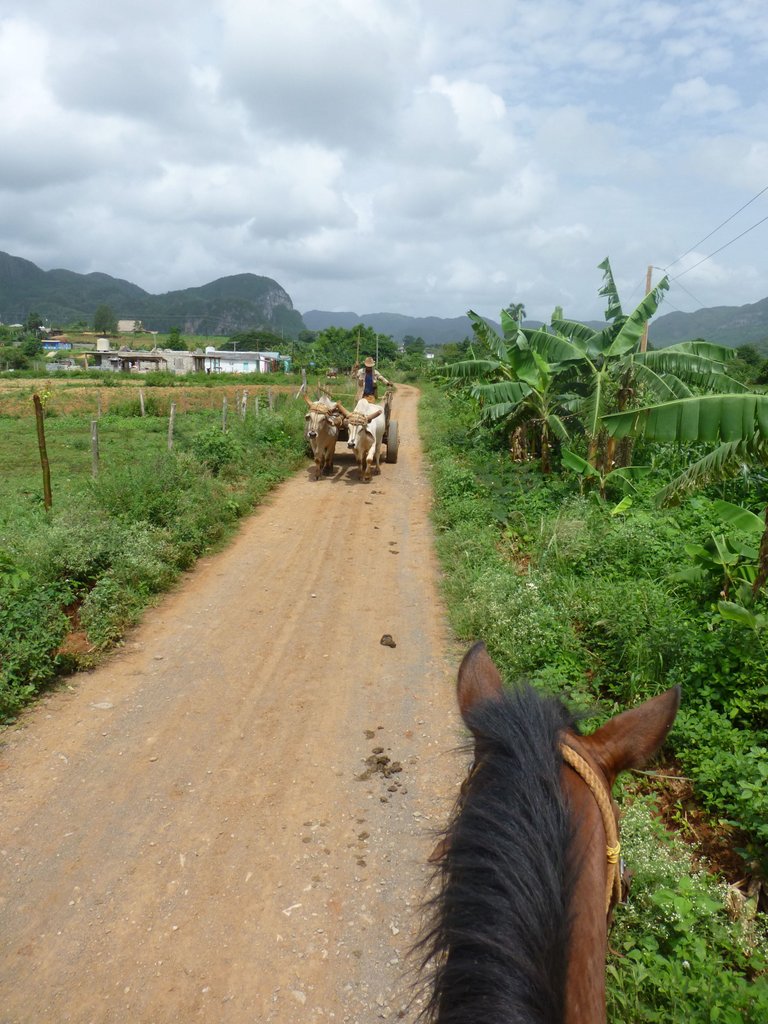
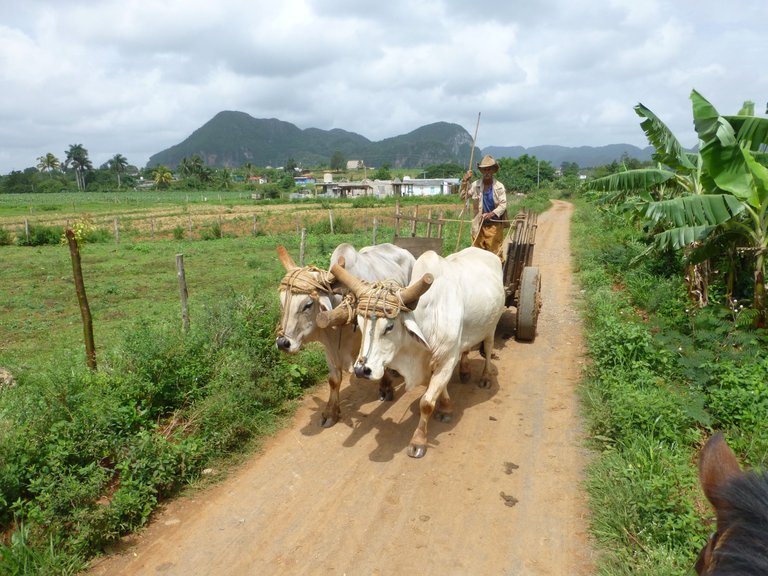
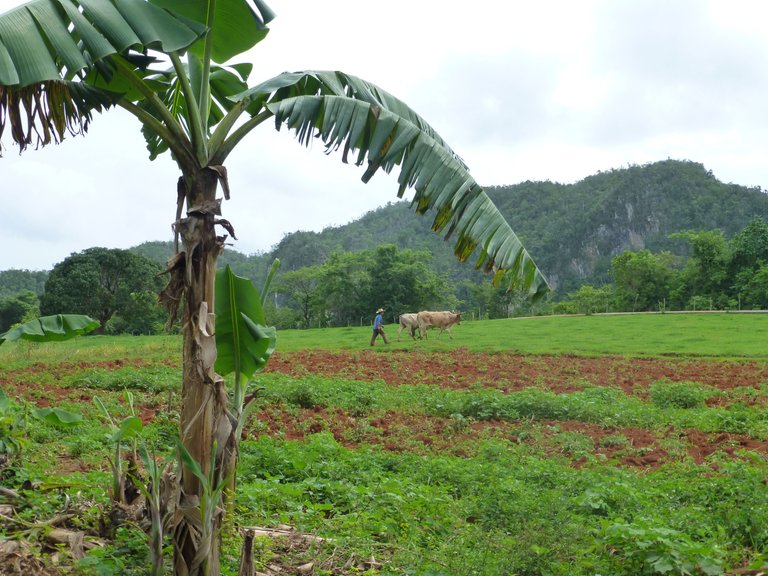
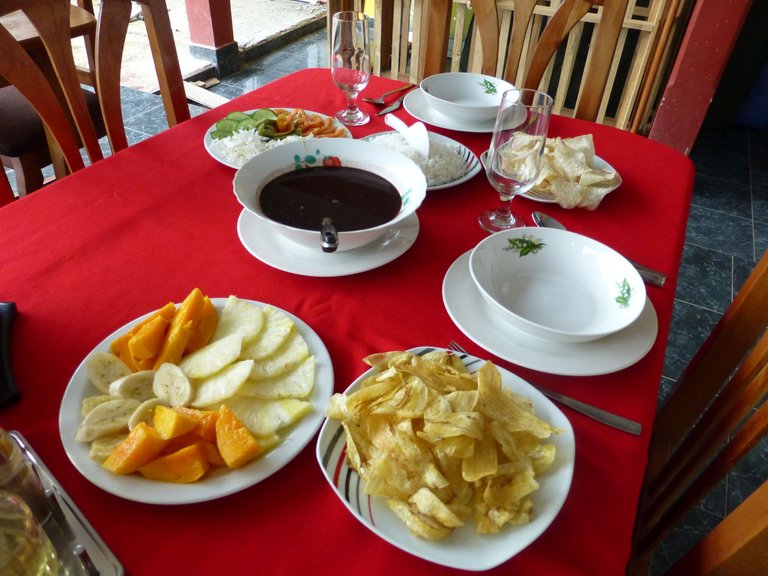
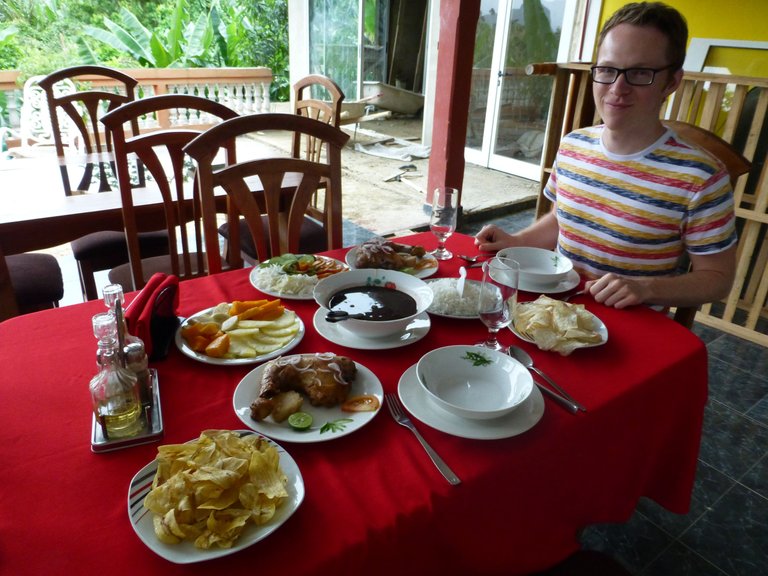
ich finde es echt cool dass es bei dir immer eine deutsche version gibt! Das mache ich vielleicht auch mal:) kubanische Zigaretten... ich kenne mich mit zigaretten nicht aus aber ich denke die sind bestimmt wirklich besonders gut! und dafür eine 200km lange reise auf sich zu nehmen - respekt!! toll dass du du uns zeigst wie ein typisches dorf in kuba aussieht, oft bleibt man ja an den touristischen orten - dabei lernt man hier viel besser die kultur kennen! Kannst du jetzt auch eine richtige Habanero selbst rollen?;))
Danke fürs vorbei schauen. Ja die deutsche Version gibt es rein schon deswegen damit meine Eltern und Großeltern auch mitlesen können😅
Zigarren usw sind normalerweise auch nicht so mein Metier, aber aufgrund er historischen Bedeutung der Habaneros wollten wir es uns doch mal genauer anschauen. Zur Not könnte ich vermutlich eine selbst rollen.
oha das ist sehr cool dass du das auch für deine eltern und großeltern machst!! ich glaube, wenn ich einmal dort bin fahre ich auch in dieses dorf.. zigarren gehören einfach zur geschichte ;)
Looking at your photos, I can see the peace here. They look similar to the countryside where I was born. It reminds me of my hometown. Thank you for sharing about this place.😊
Happy to hear that my post reminded you of your hometown. These rural places have their own kind of charm. Thanks for taking the time to check it out 😀
wie lustig, dass eure betten erst noch aufgebaut werden mussten... das nimmt man doch gerne in Kauf um das "typische Kuba" kennenzulernen. Das kubanische Essen mit den frittierten Bananen sieht echt lecker aus. Toll das ihr so nah am "kubanischen Leben" ward!
Fritierte Bananen sind auch echt ein Geschmack für sich. Der erste Bissen ist etwas eigenartig aber dann schmeckts super. Danke fürs vorbei schauen 😀
Congratulations, your post has been added to Pinmapple! 🎉🥳🍍
Did you know you have your own profile map?
And every post has their own map too!
Want to have your post on the map too?
Congratulations @timoremoti! You have completed the following achievement on the Hive blockchain and have been rewarded with new badge(s):
Your next target is to reach 3000 upvotes.
You can view your badges on your board and compare yourself to others in the Ranking
If you no longer want to receive notifications, reply to this comment with the word
STOPCheck out the last post from @hivebuzz:
Hiya, @LivingUKTaiwan here, just swinging by to let you know that this post made it into our Top 3 in Daily Travel Digest #1452.
Your post has been manually curated by the @pinmapple team. If you like what we're doing, please drop by to check out all the rest of today's great posts and consider supporting other authors like yourself and us so we can keep the project going!
Become part of our travel community:
Woah. Thanks. Did not expect to make the Top 3. Thanks again for letting me know and the curation work you are doing😀